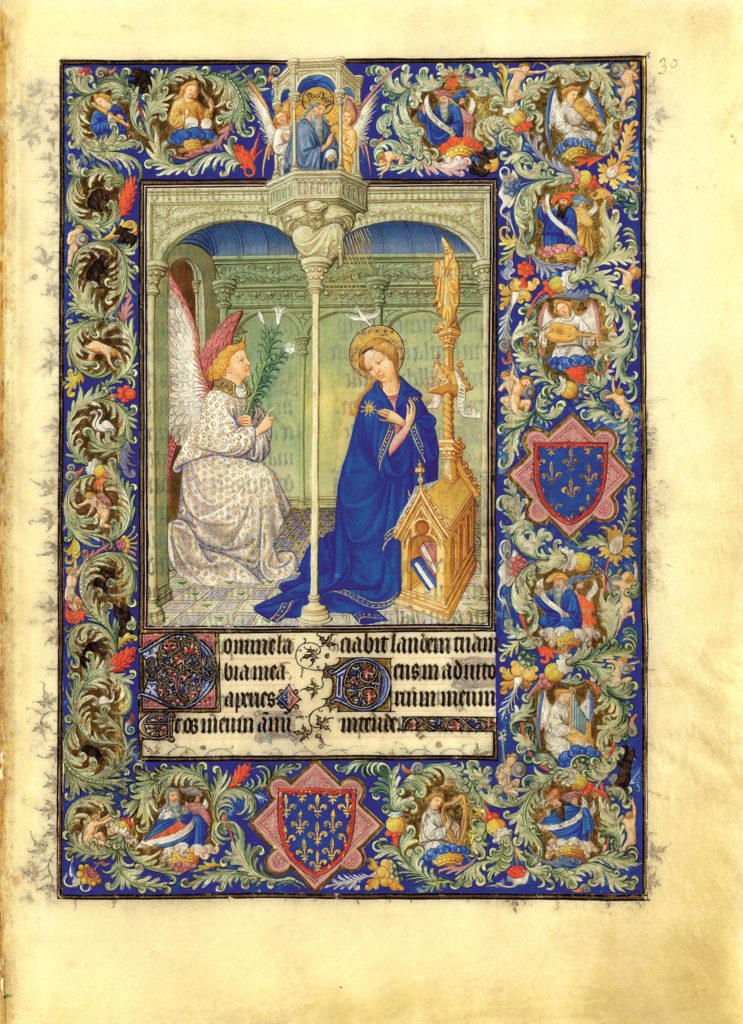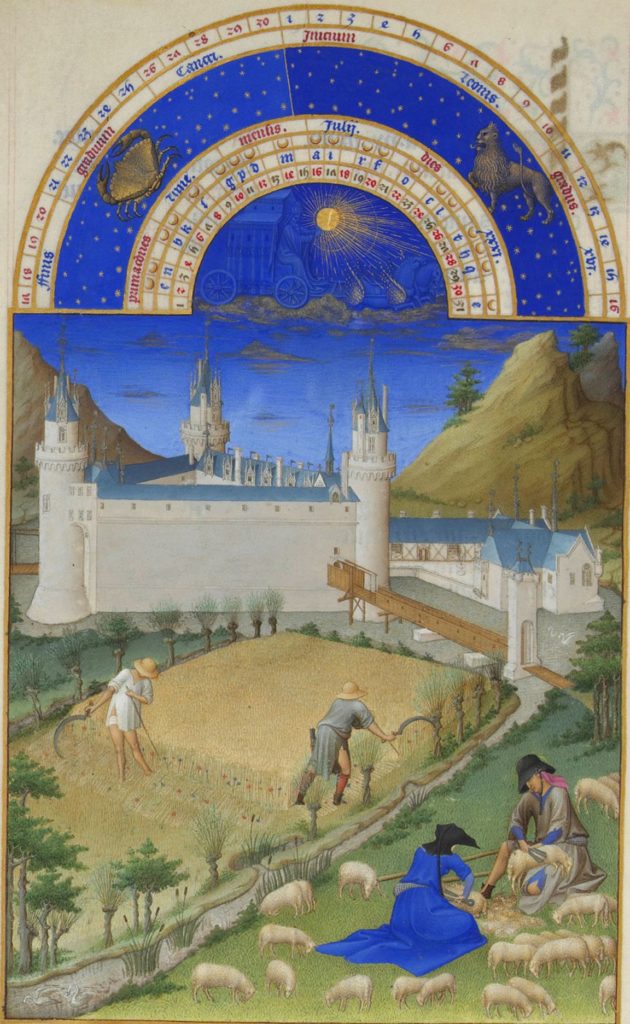Two weeks ago we examined the lovely dentelle initial on folio 1r of 10a 189. On that same page are the Duke of Ferrara’s coat of arms, also painted. The coat of arms consists of a dark red carnation and green leaves on either side, inside a gold-leafed ring set with a blue stone.

Inks used in medieval manuscripts were crafted from plants and minerals such as oak gall for black; lead for white; verdigris for green; cinnabar or vermillion for red; and indigo, woad, or lapis lazuli for blue. These materials would be mixed with binders such as gum Arabic and/or egg white.
While we have not analyzed the chemicals in any of our manuscripts at the Library, it is highly likely that the blue used for the stone in the coat of arms is not lapis lazuli. Why? Lapis lazuli stones were expensive, as they could be mined only in modern-day Afghanistan – quite a way to travel without modern transportation methods. Generally, only the most lavish manuscripts used lapis lazuli, and even then it wasn’t used for all illuminations. The rich ultramarine blue of ground lapis lazuli was often reserved for the most holy of illuminations: the robes of the Virgin Mary. That’s not to say lapis lazuli wasn’t used for other paintings; it was, and some of the most deluxe Books of Hours use it in their calendar pages.
Compare the blue in the two images below, both from the Belles Heures of Jean de France, duc de Berry (1405–1408 or 1409), to the blue in the coat of arms in 10a 189. What do you think? Lapis lazuli or not?
Sources:
“Overview of Artists’ Materials,” Lab. Illuminated: Manuscripts in the Making. The Fitzwilliam Museum, Cambridge, United Kingdom. 2016.
Bucklow, Spike. The Alchemy of Paint: Art, Science and Secrets from the Middle Ages. London: Marion Boyars, 2009.


